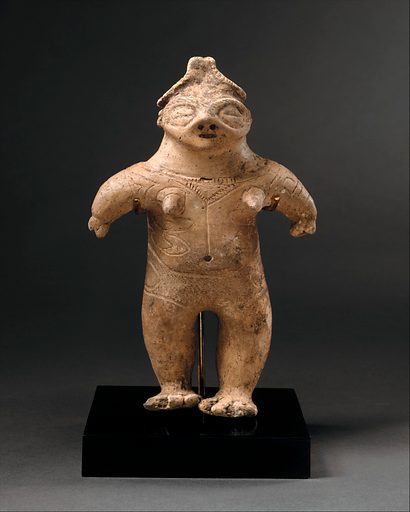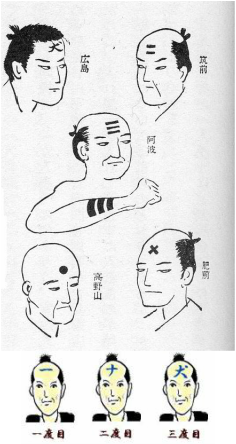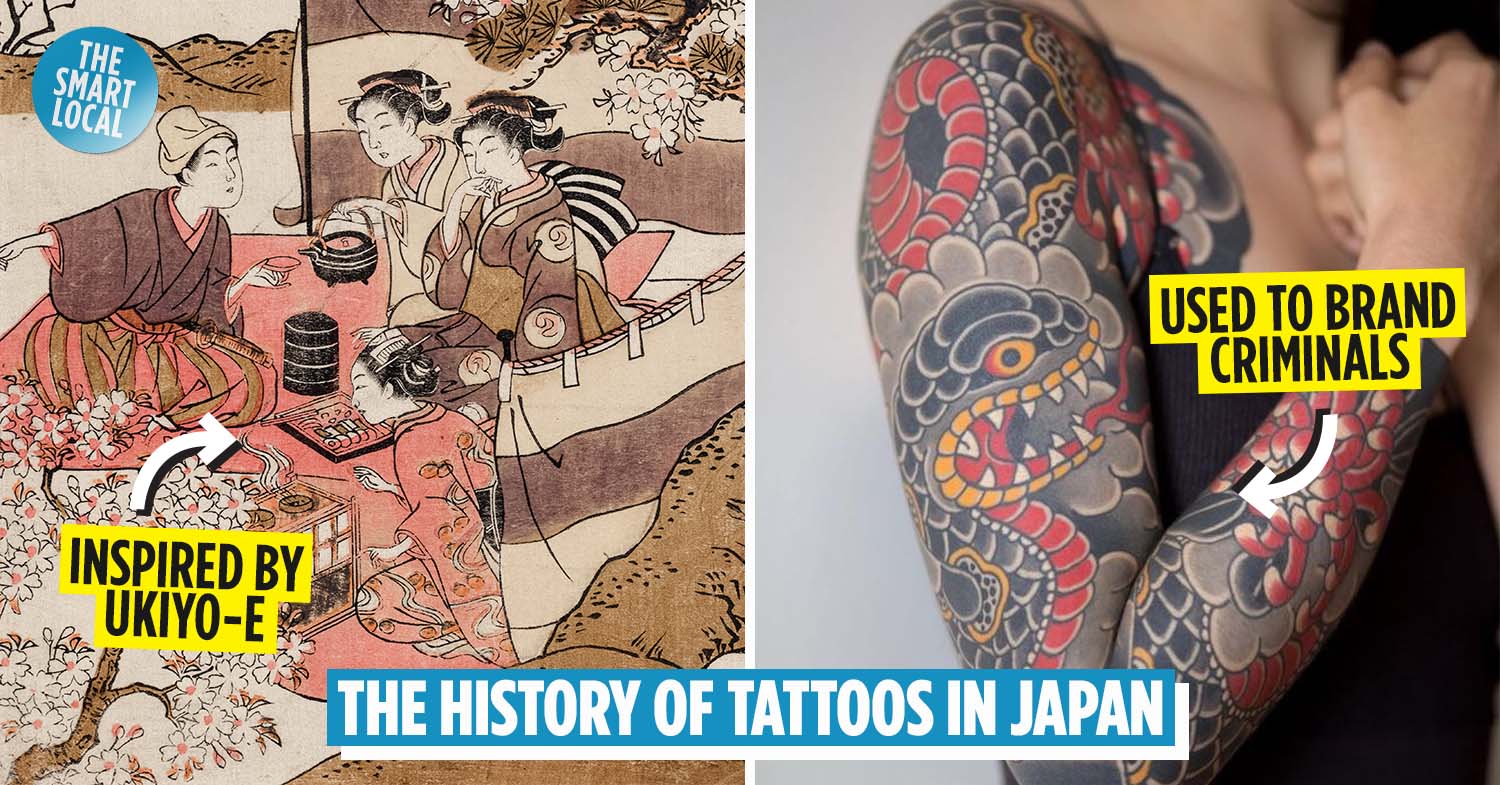Japanese irezumi tattoos
Ever wondered why tattoos aren’t allowed in public baths and hot springs in Japan? The current stigma behind tattoos, or irezumi, stems from criminal associations with the term from the past.
“Irezumi” (入れ墨) literally means “inserting ink”. The term refers to a traditional style of Japanese tattoos created using tebori – a tool that has a wooden or metal handle attached to a needle via a silk thread.
Pre-Edo period

Image credit: The Metropolitan Museum of Art
The origins of this traditional art of tattooing can be traced back to the tattooed faces and bodies of the clay figures from the Jōmon period (14,000-300 BCE).
Meanwhile, the first written record of irezumi was found in a Chinese historical text called Records of the Three Kingdoms (三國志), where the Japanese were depicted as having tattoos.
However, there are also Japanese historical records – the Kojiki and the Nihon Shoki – suggesting that tattoos did not exist during the Jomon period. Thus, the exact origins of irezumi remain murky to date.
Irezumi kei – tattoo punishment for criminals

Image credit: Iromegane
By the 17th century, irezumi kei – tattoo punishment – was used to brand criminals. Different types of irezumi were used depending on the type of crimes committed, as well as which regions the criminals hailed from.
Irezumi’s development into an art form
 Image credit: Library of Congress
Image credit: Library of Congress
During the Edo period (1600–1868), irezumi was transformed into an art form due to the popularisation of ukiyo-e (woodblock prints) and Suikoden – a Chinese novel that had beautiful ukiyo-e illustrations.
However, as the country wanted to leave a good impression on other nations, the traditional Japanese tattoo was later outlawed in Japan after the end of sakoku rei (鎖国令) – Japan’s isolationist foreign policy that limited trade and relations with other countries from 1853 to 1867.
Irezumi’s associations with the yakuza
Although irezumi was legalised in 1948, its association with crime and overall stigma remained.

Image credit: Toei
From 1960 to 1970, the proliferation of yakuza movies that depicted heavily tattooed gangsters contributed to the current associations between the two.
How Japanese irezumi tattoos became stigmatised
Irezumi may still be heavily stigmatised in Japan, but with the continuous influx of foreigners over the years, perceptions of tattoos amongst the Japanese are definitely changing slowly, but surely.
Also check out:
- Jigokudani monkey park – watch macaque soak in onsens
- Hakone onsen theme park
- Ashinomaki Onsen Ookawaso – Demon Slayer “Infinity Castle”
- Japanese bathhouses to visit in Tokyo
- Japanese capybara wins onsen competition
Cover image adapted from: Library of Congress and @mona.1229k
